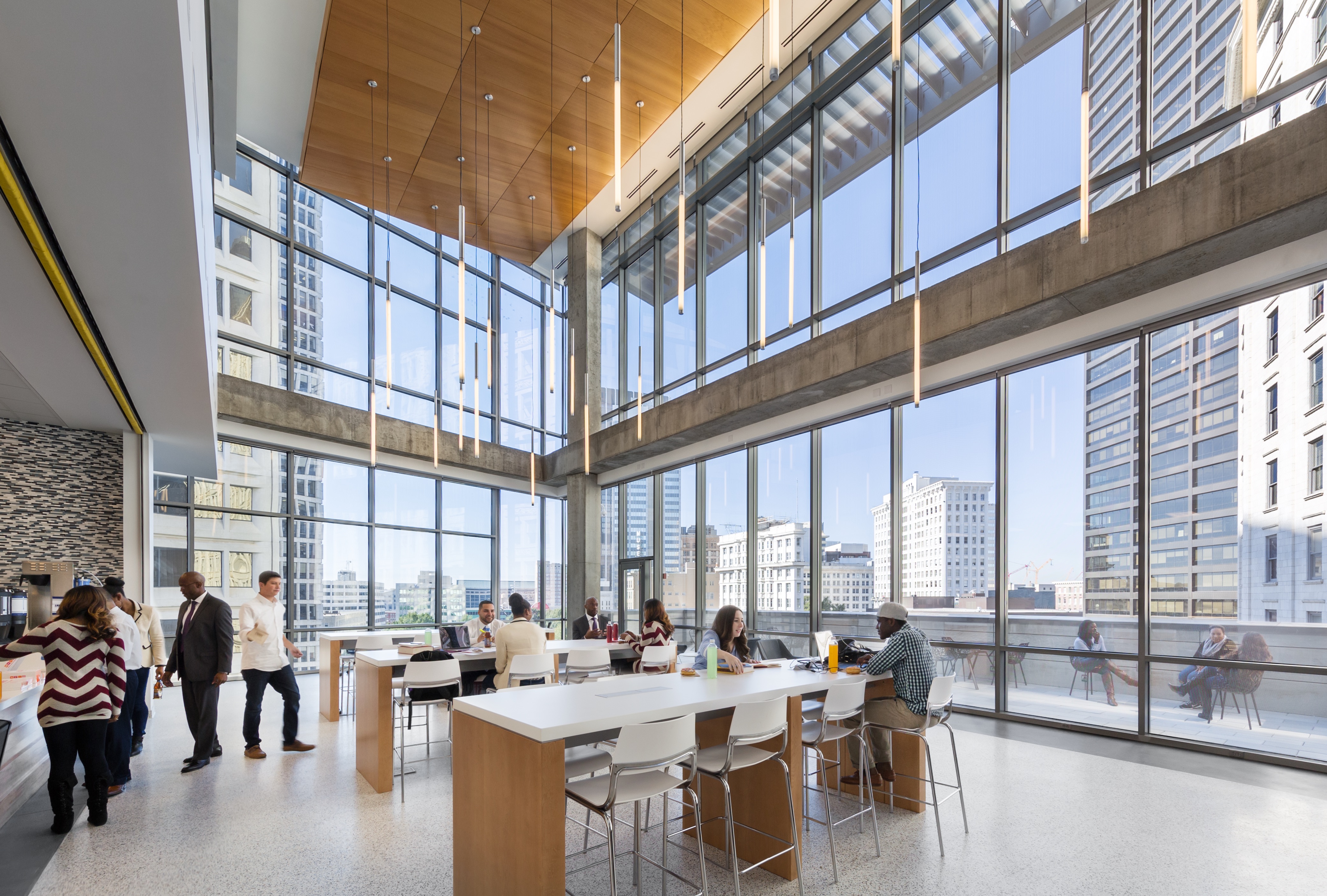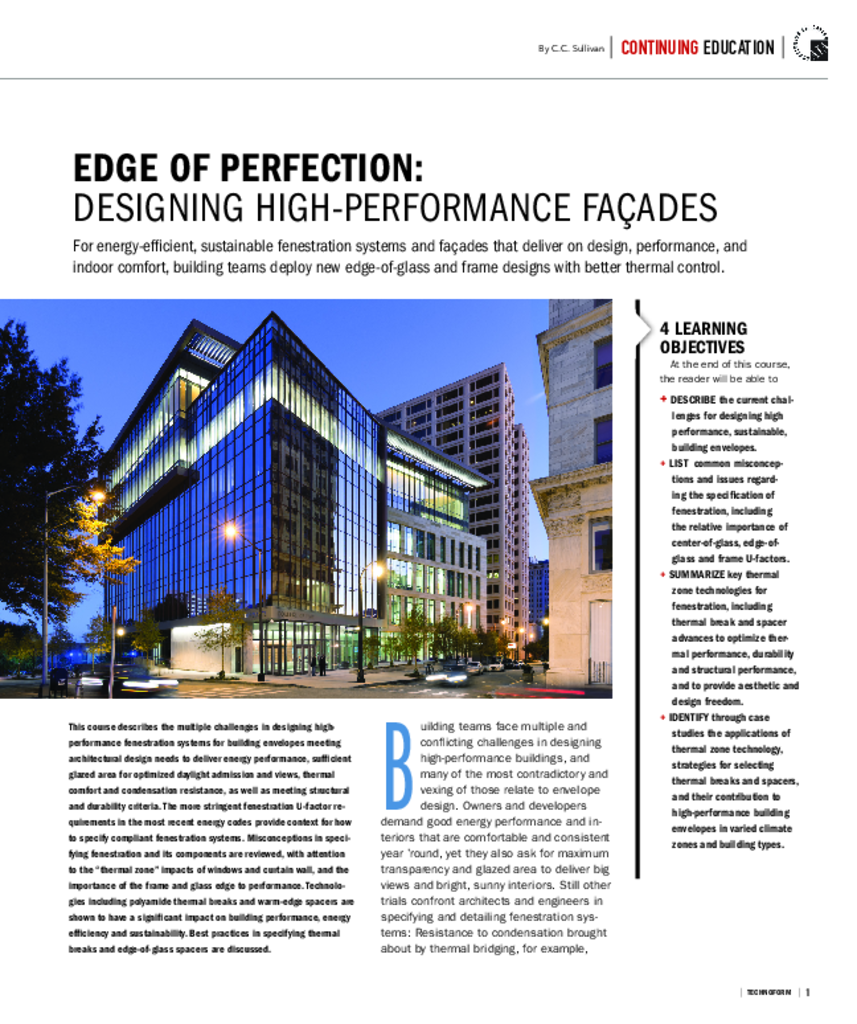Edge of Perfection: Designing High-Performance Façades

This course describes the multiple challenges in designing high performance fenestration systems for building envelopes meeting architectural design needs to deliver energy performance, sufficient glazed area for optimized daylight admission and views, thermal comfort and condensation resistance, as well as meeting structural and durability criteria. The more stringent fenestration U-factor requirements in the most recent energy codes provide context for how to specify compliant fenestration systems. Misconceptions in specifying fenestration and its components are reviewed, with attention to the “thermal zone” impacts of windows and curtain wall, and the importance of the frame and glass edge to performance. Technologies including polyamide thermal breaks and warm-edge spacers are shown to have a significant impact on building performance, energy efficiency and sustainability. Best practices in specifying thermal breaks and edge-of-glass spacers are discussed.
LEARNING OBJECTIVES:
- DESCRIBE the current challenges for designing high performance, sustainable, building envelopes.
- LIST common misconceptions and issues regarding the specification of fenestration, including the relative importance of center-of-glass, edge-of-glass and frame U-factors.
- SUMMARIZE key thermal zone technologies for fenestration, including thermal break and spacer advances to optimize thermal performance, durability and structural performance, and to provide aesthetic and design freedom.
- IDENTIFY through case studies the applications of thermal zone technology, strategies for selecting thermal breaks and spacers, and their contribution to high-performance building envelopes in varied climate zones and building types.
Click to download
More Campus Related Content
Building Materials and Equipment
Deconstructing the Window
Over the years, the industry has relied heavily on the increasing performance of low-e coatings to drive window U-factors (thermal transmittance)…









